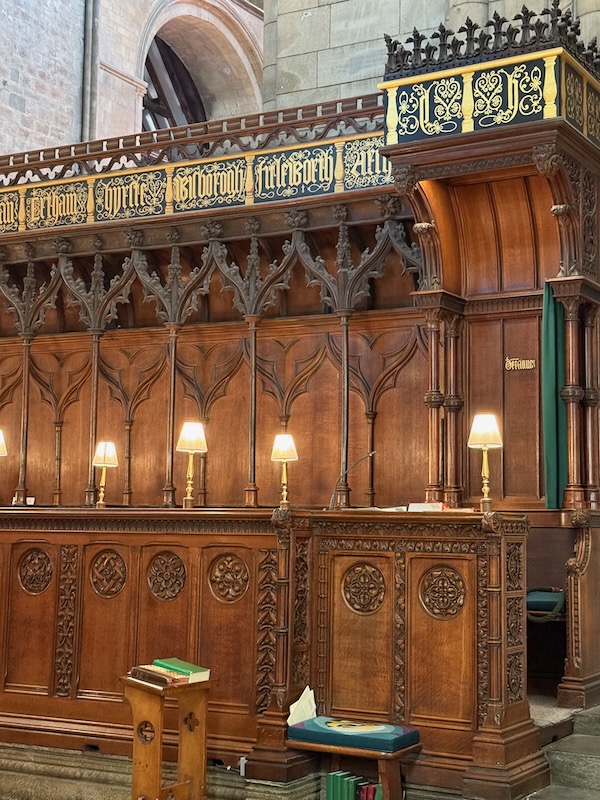Our Blog - August 2025 - England trip - Chichester
Chichester is one of the larger towns that we visited. It was a Roman and Anglo-Saxon settlement and a major market town from those times through Norman and medieval times to the present day. There was actually a market going on when we visited along with a "boot sale", which seemed to be a flea market where people could bring their things to sell in the "boot" of the car and sell them in a specific parking area. Chichester has close to 30K people but one of the highest rates of empty homes in England (1 in every 17 houses vacant) but almost all of the vacant homes were 2nd homes ... which I don't know if I personally would consider vacant.
The Romans arrived around 43AD and the current plan of the town dates from the Roman times, with shopping streets radiating out from a central intersection. There are some city walls that are from medieval times but sit on Roman foundations. The Novium Museum (which we didn't visit) has a preserved Roman Bath House complex which would have been cool to see but we were with Lucy and puppies weren't allowed. Outside of Chichester are also remains of 2 Roman villas that have mosaics on display (also not puppy-friendly).
The start of our tour is this building, currently NatWest Bank. The bank itself has quite a history. The bank was established in Southwark in 1836 as Surrey, Kent & Sussex Banking Co. In 1839, it was renamed London & County Banking Co. (this is the name you see engraved in the stone). Lots and lots of mergers later, it is NatWest bank. The building at was completed in 1900 for the London and County Banking Company and was designed in a late period of Gothic with oriel windows.
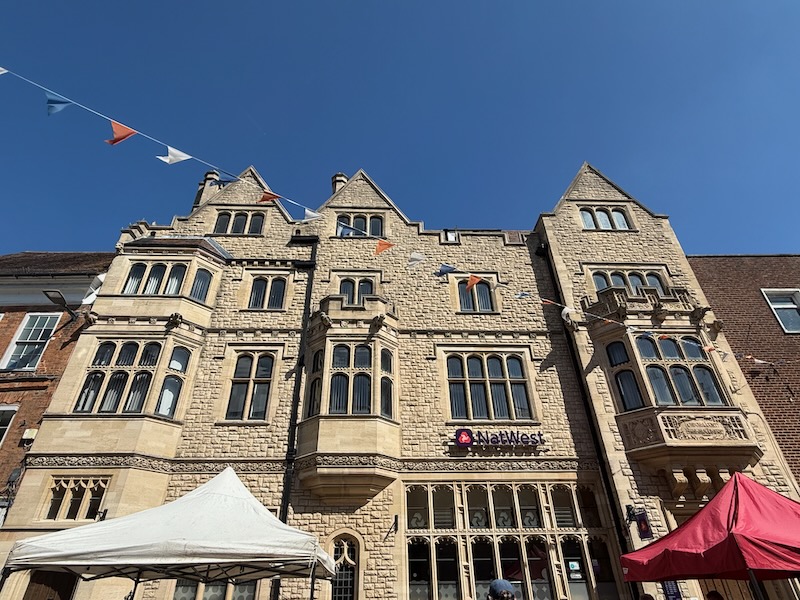
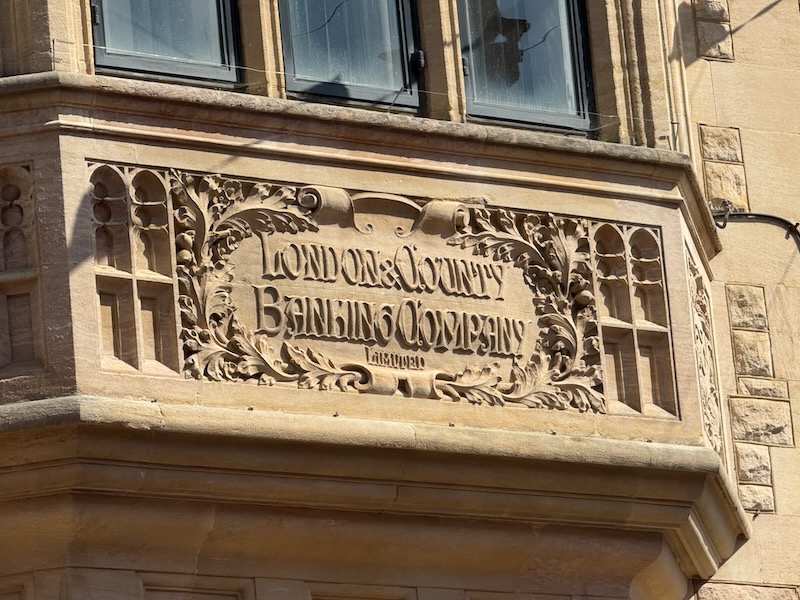
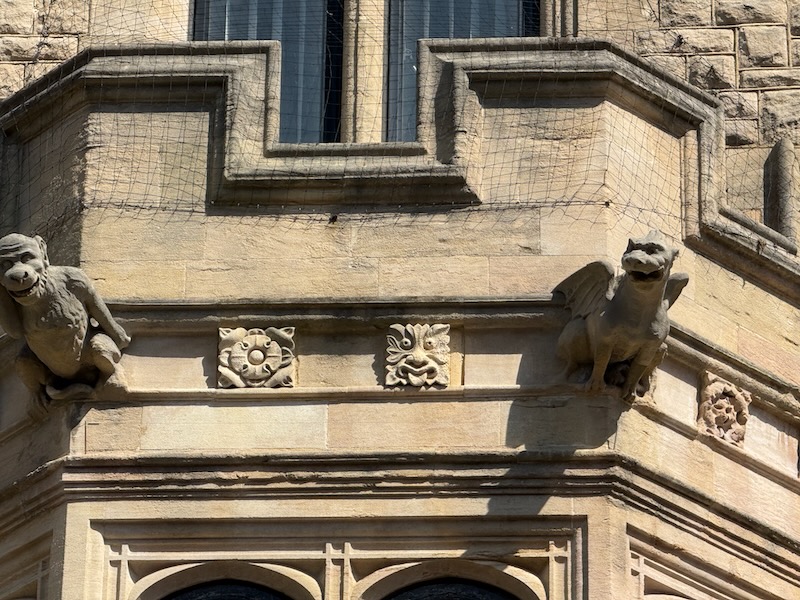
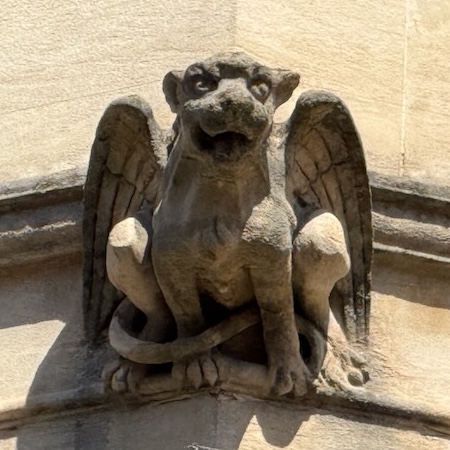
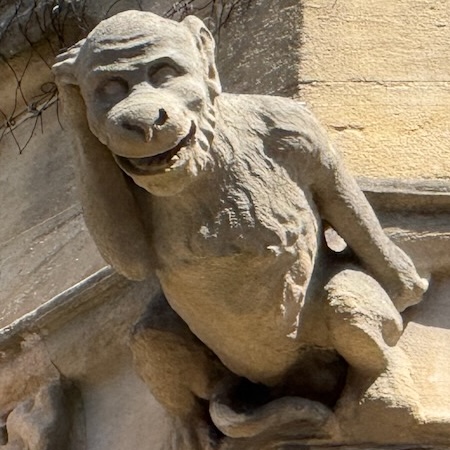
The Chichester Cross was erected in 1501. The purpose was to allow peasants with only a handful of produce to sell their product without paying any trading fees, under the premise they were protected by the cross. The cross is octagonal, with an entrance arch on each side and a clock above 3 of the arches.
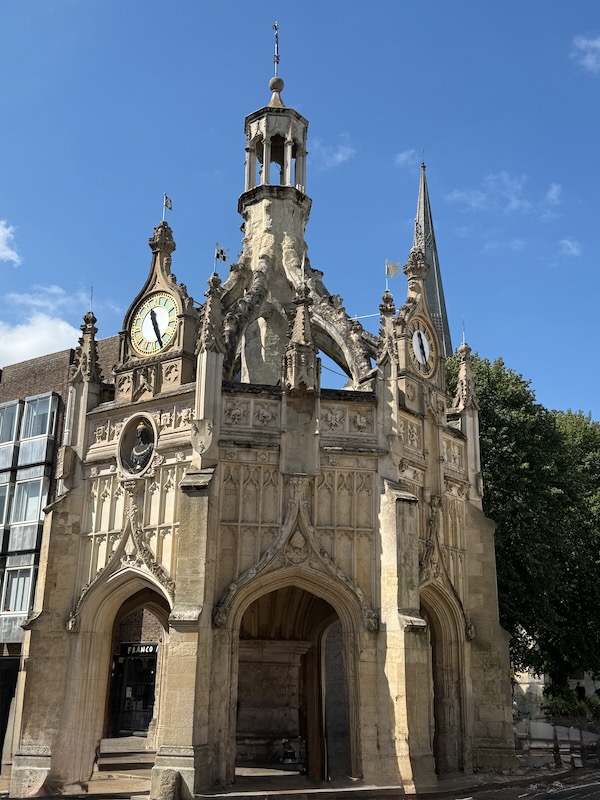

This is a statue of Sir George Murray and Admiral Lord Horatio Nelson. Sir George Murray was born in Chichester in 1759 and joined the Royal Navy at age 11 (I guess they let them start early back then!). He served under Admiral Nelson in 1801 and they became close friends. Murray became Mayor of Chichester in 1815 and died here in 1819.

The Church of St Olave is the oldest occupied building in town, built around 1050. The flint west front is wedged between other buildings and dates from the 14th century. We weren't able to go inside but the nave supposedly is 11th century.
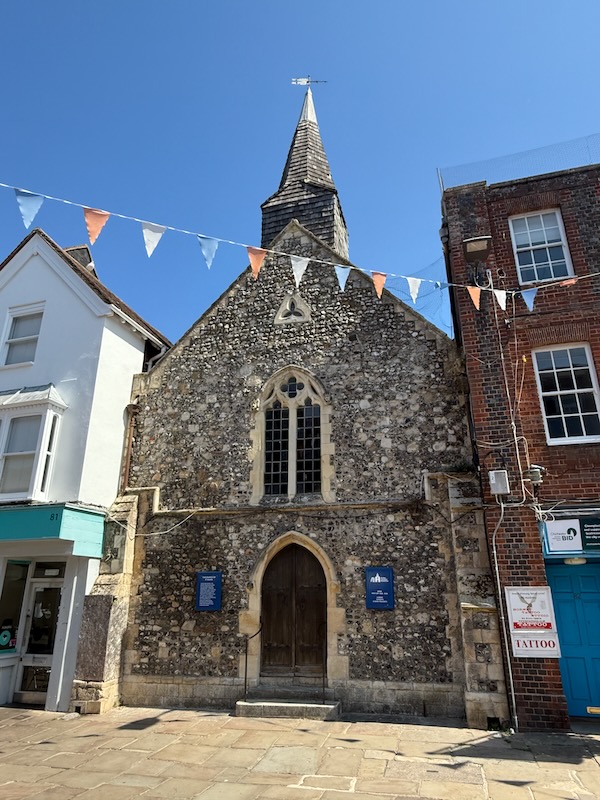
Chichester Cathedral is quite old, built around 10 years after the invasion of William the Conqueror/the Battle of Hastings in 1066. It is the only cathedral in the UK that still has its original detached medieval bell tower. It was consecrated in 1108 but most of the cathedral was destroyed in a fire in 1187 and reconsecrated in 1199. The spire was completed in 1402. The positioning of the 15th-century bell tower separate from the church is partly due to the collapse of the south-west tower in 1210. It was rebuilt and then the north-west tower collapsed in 1635 and was eventually rebuilt in 1901. There is a really nice sundial painted on the side.
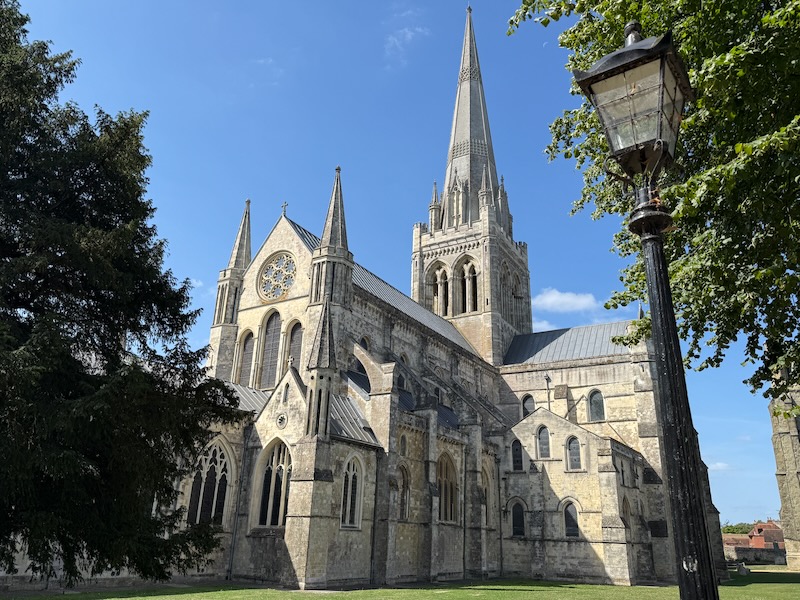
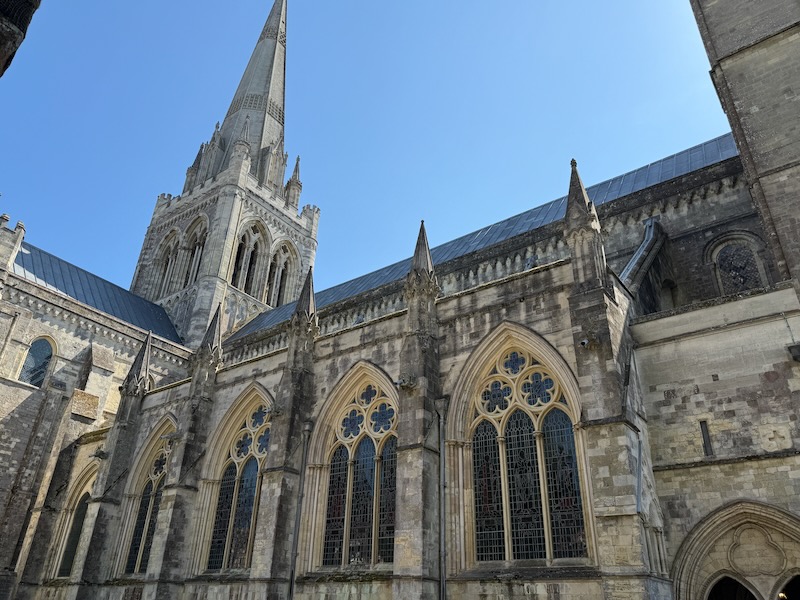
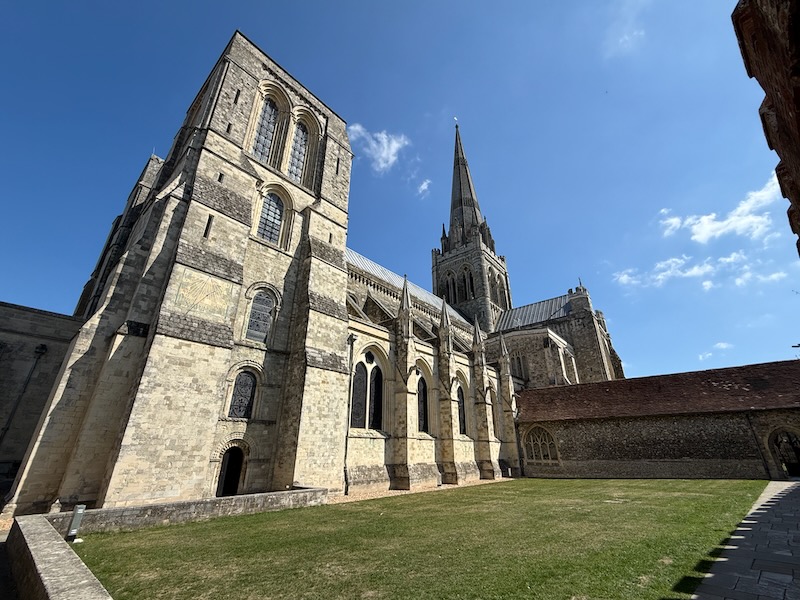

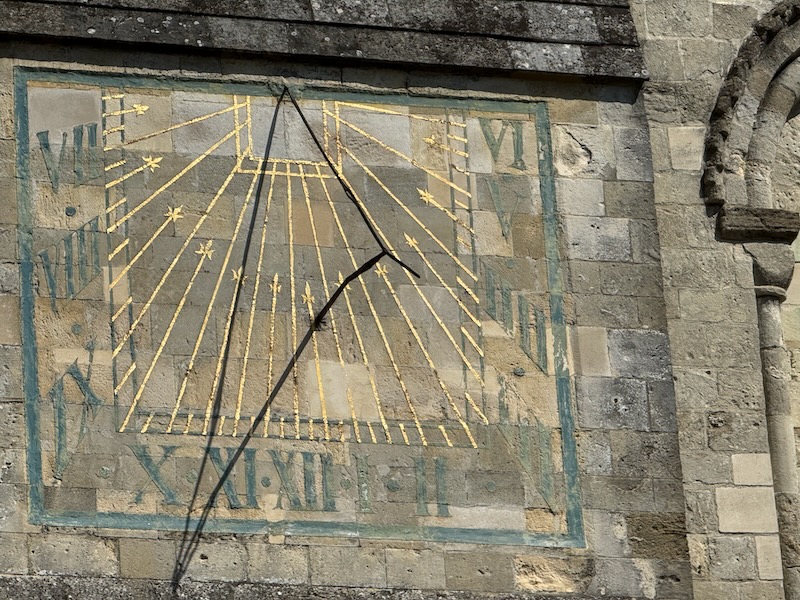
The interior is mostly Gothic, with different styles from the late 12th-century through to the 15th century. After a fire in 1187, the entire building was given a ribbed vault ceiling. One of funeral monuments is that of Henry Blaxton, a former Chancellor of Chichester Cathedral who was buried here in 1606. On the memorial, surmounted by his family arms, are the names of his 9 children.
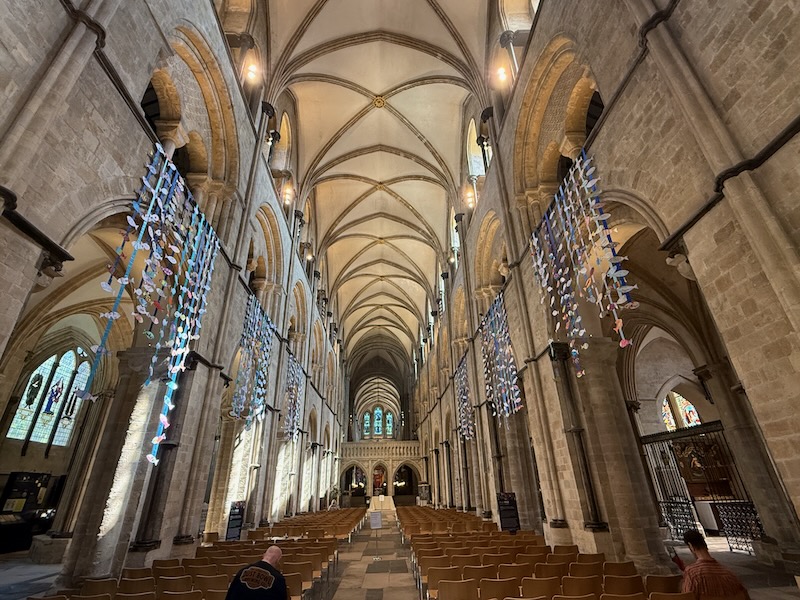
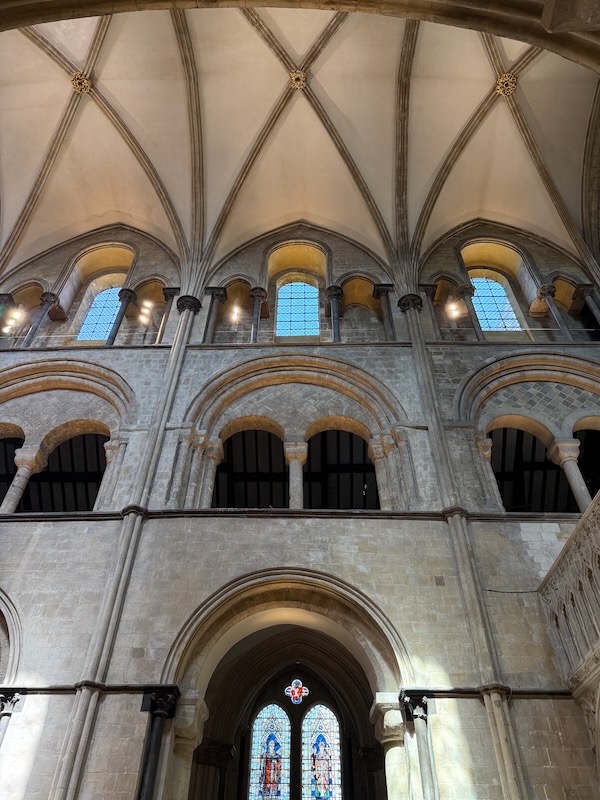
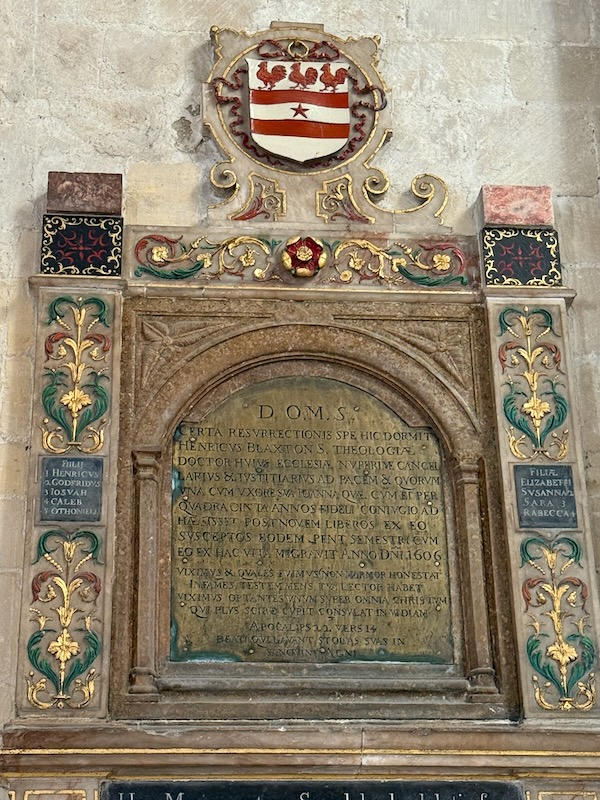
The Chapel of Saint George, which was created in around 1200, was changed in the early 1900's to be a memorial to the dead of the Royal Sussex Regiment after WWI, and then additional boards added after WWII. Over 8,000 names are recorded here. The piece behind the altar shows Saint George killing the dragon against the backdrop of the Cathedral.
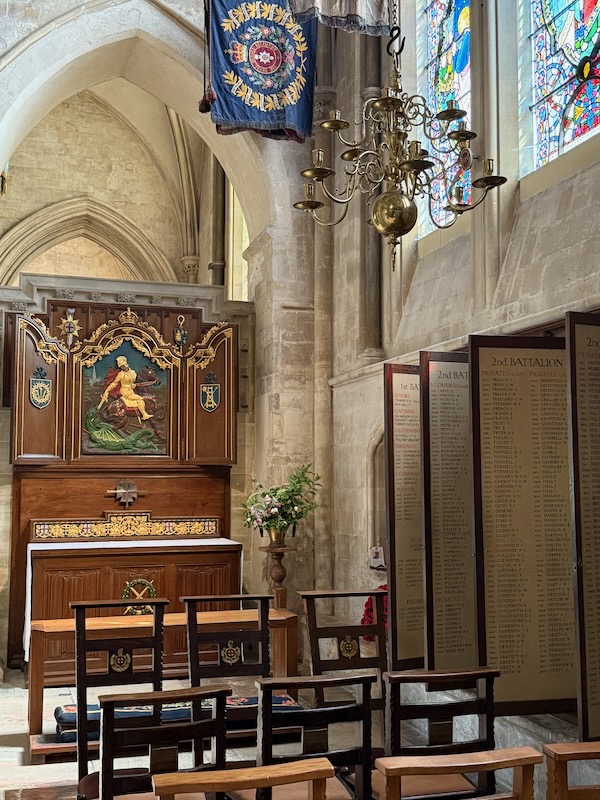
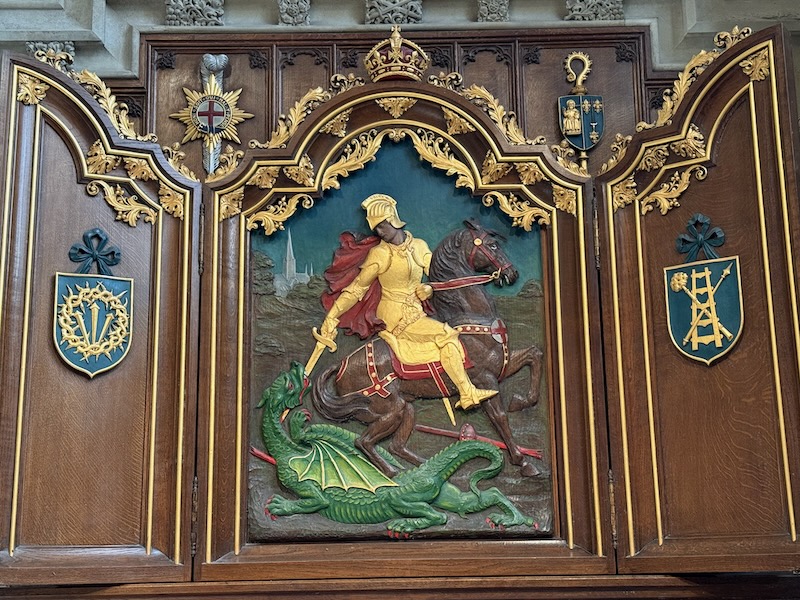
This massive granite and freestone monument with a richly decorated canopy commemorates Bishop Richard Durnford, the Bishop of Chichester from 1870 to 1895.
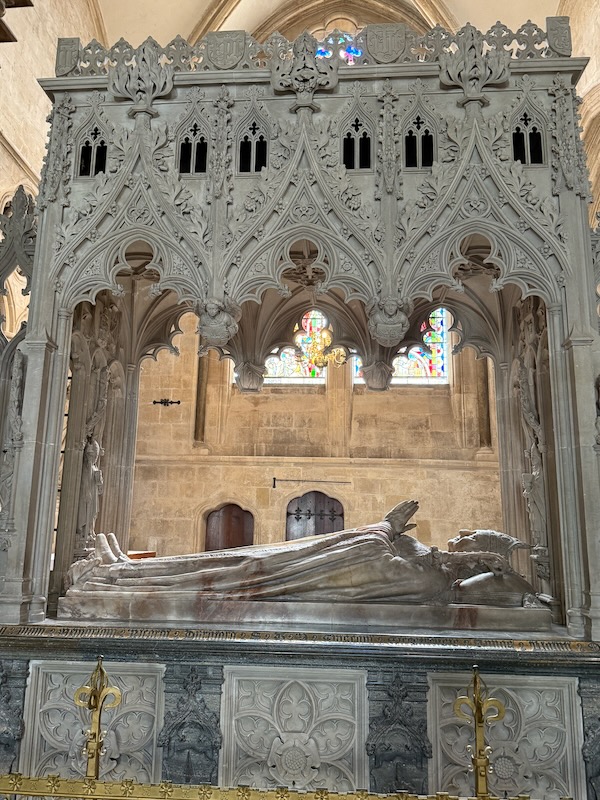
There is a stone Rood screen that was built in the mid-15th century from stone brought from Caen, France. It was installed to separate the choir from the nave. It was removed in 1859 (this was quite common, to remove the symbolic separation of the congregation from the religious personnel) which contributed to the collapse of the spire in 1861. Thankfully, it was just put in storage and re-erected in 1961, with the addition of 3 open arches to be able to view the high altar from the nave.

The South Transept is dominated by a huge window; the glass dates from 1877 and depicts scenes from both the Old and New Testament. The large painted wooden panels on the wall were painted in the 1530s by a local artist. This one shows King Henry VIII guaranteeing the protection of the Cathedrals future.
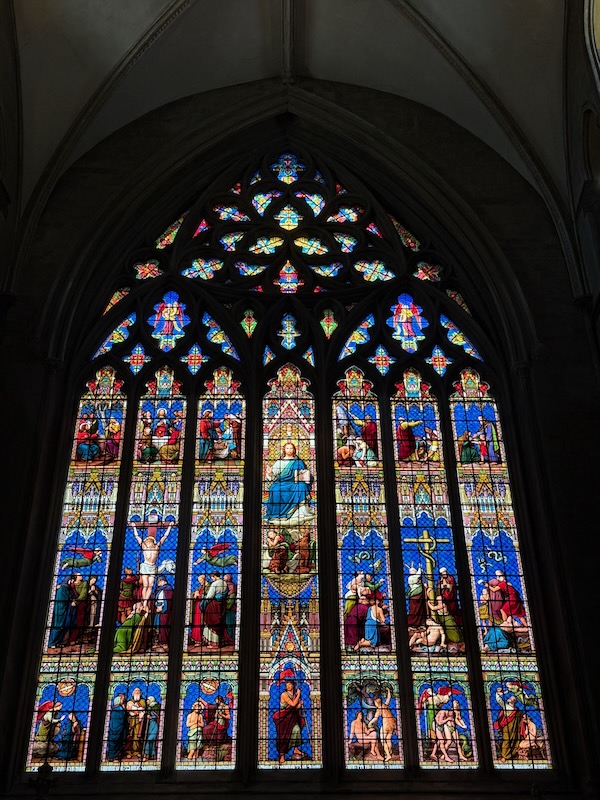
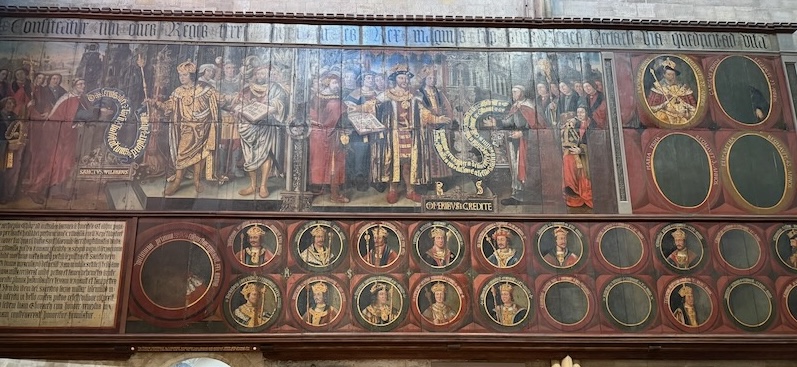
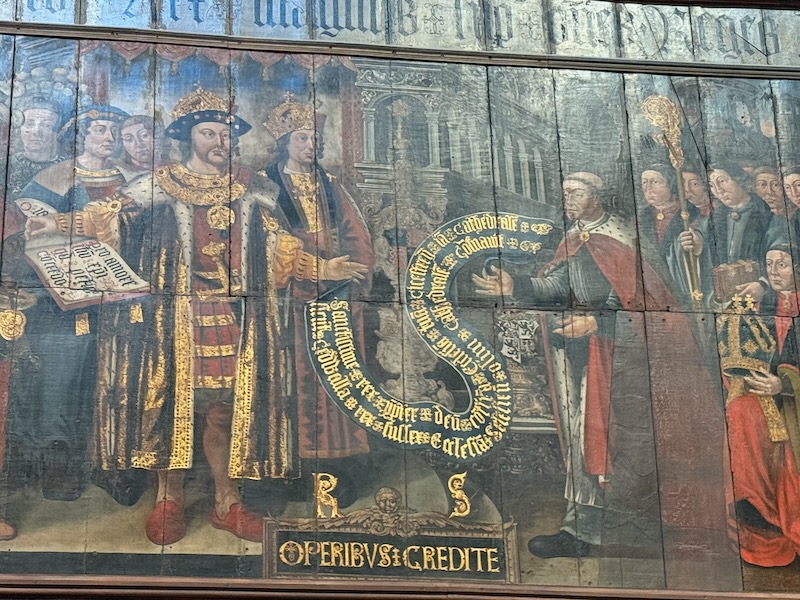
There are 2 bas-reliefs, called the Lazarus Reliefs, that were hidden for years and rediscovered hidden behind the choir. They are thought to date from the early 12th century and moved to their current position in 1829. The 2 panels illustrate the story of the raising of Lazarus.

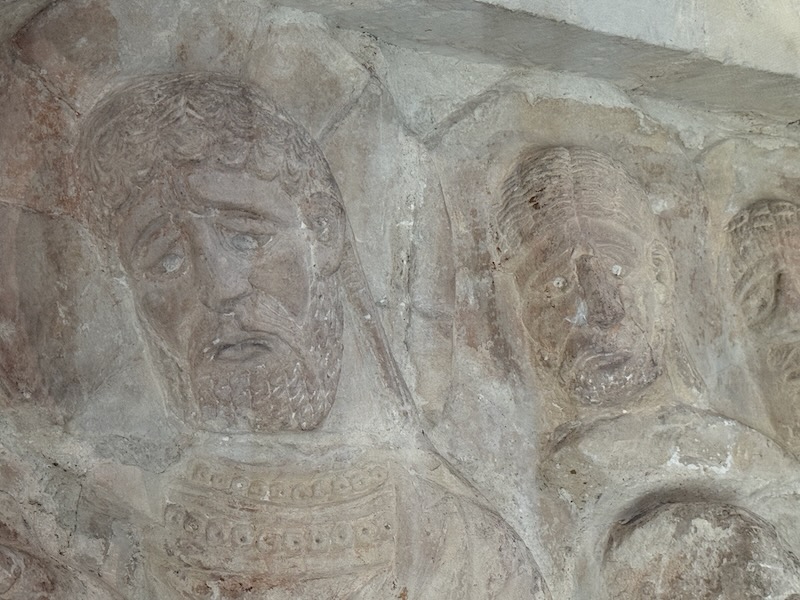
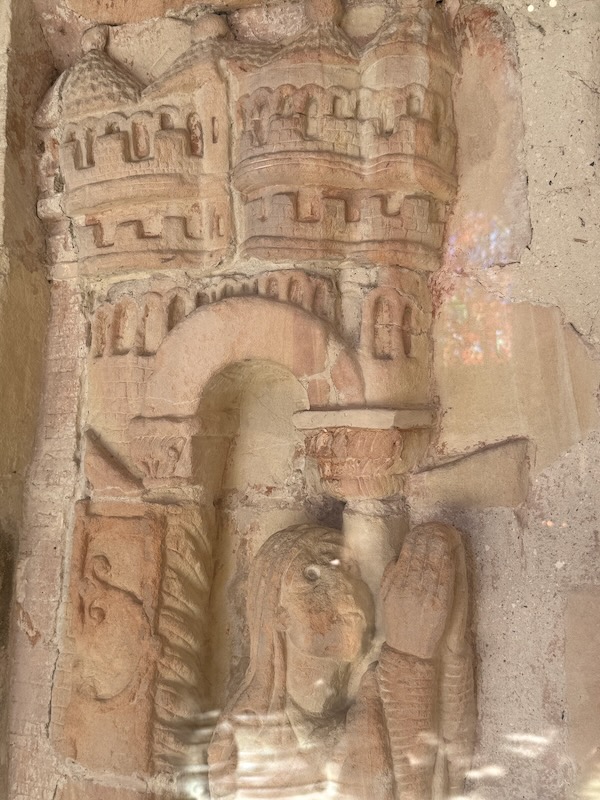
I mentioned that the town dates back to Roman times, and here is a section of a 2nd-century mosaic floor that was part of a Roman building here. This section and the remains of 6 other rooms were discovered in 1966 during work on the foundation of the church.

The very back of the Cathedral is the Lady Chapel, which is set aside for prayer. It used to be much smaller but it was extended to be much longer in the mid-1100's. Between 1750 and 1871, it was a mausoleum for the family of the Duke of Richmond. The colors on the ribbed vaults were put in during a refurbishment in 2007-2009, when the original colors were discovered. The alabaster altarpiece contains a mosaic representing Christ appearing to his disciples after the Resurrection.
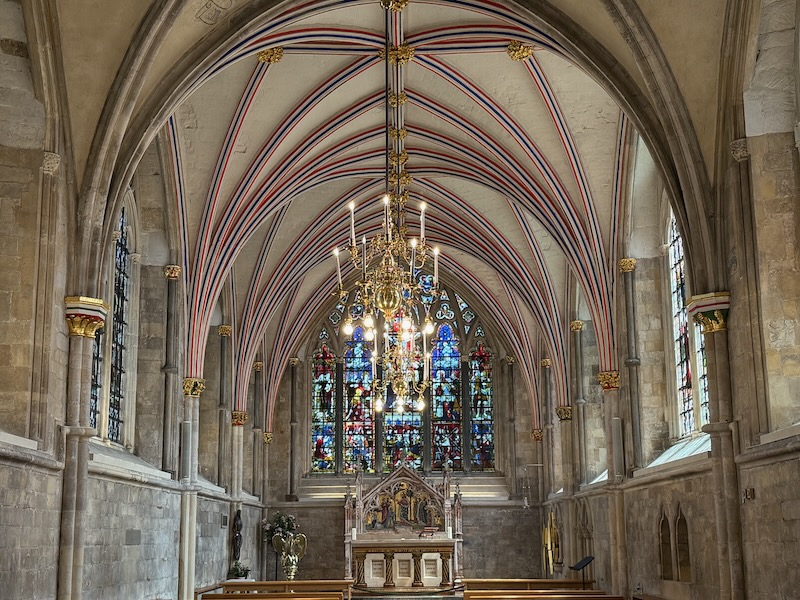
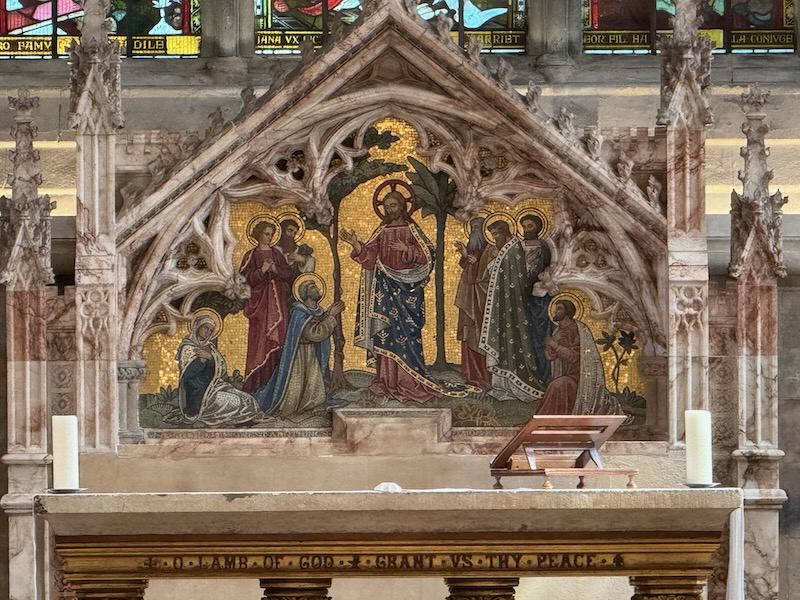
Probably the most famous thing here is the Marc Chagall Window, installed in 1978. It illustrates Psalm 150 (the last psalm in the Old Testament). At the top of the window, the tablets of the 10 commandments are held by King David, shown riding a horse (or donkey). Each of the 10 commandments is reflected in the one of the 10 panels in the window.
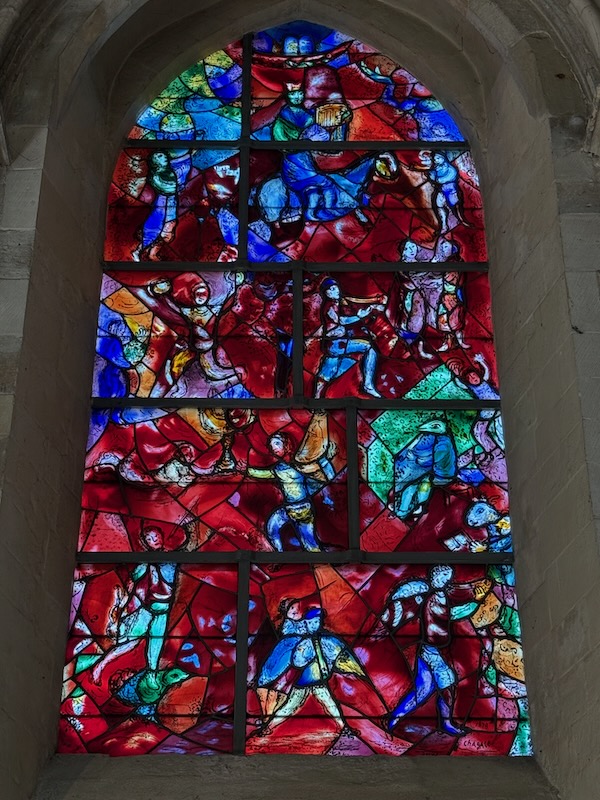
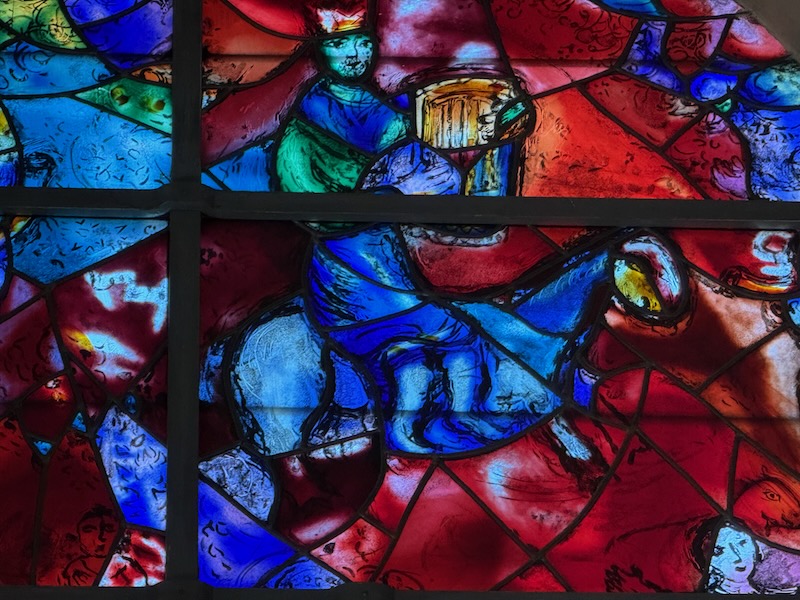

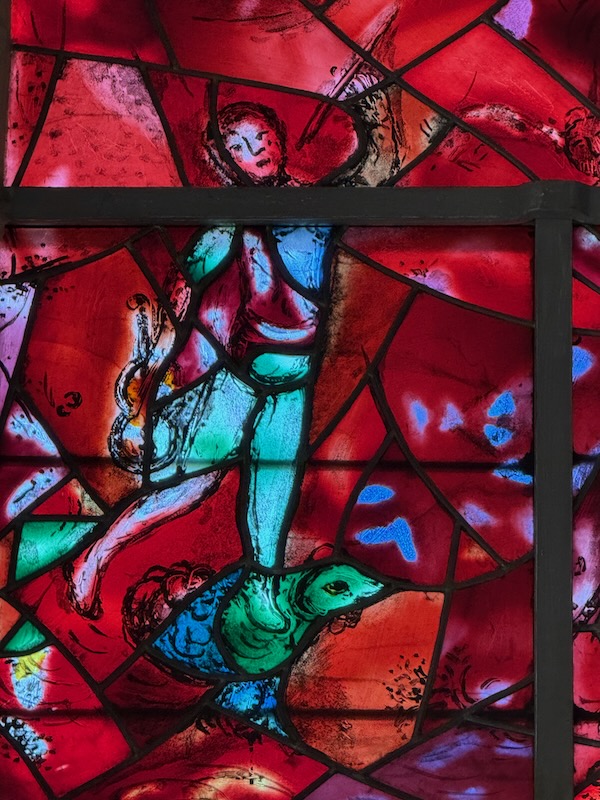
Similar to the South Transept, the North Transept also has Tudor paintings. Here, the paintings are "representations" of the Bishops of Chichester. However, I say "representations" in quotes because they all have similar features – those of Bishop Robert Sherborne who commissioned the painting in the 1530s.
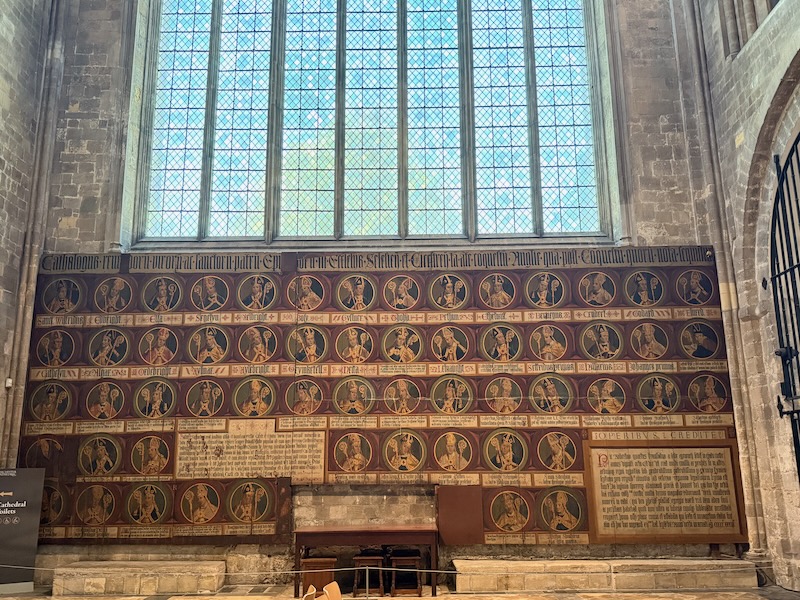
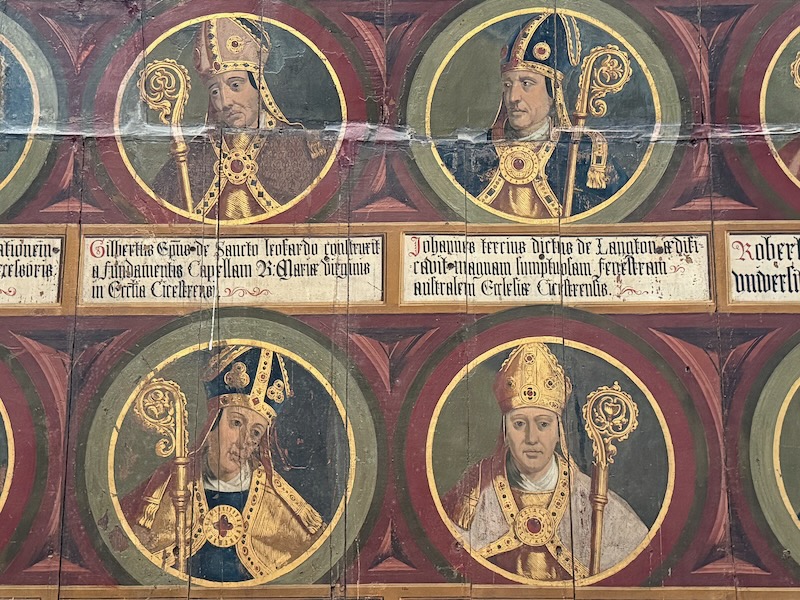
Choir stalls in the choir are 3-tiered carved wooden stalls that date from the 1330s.
